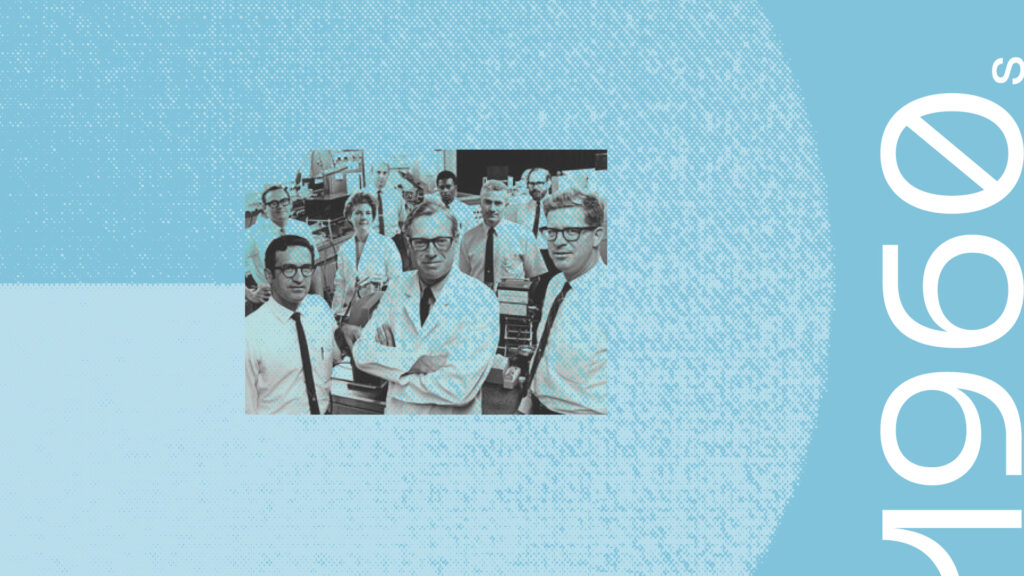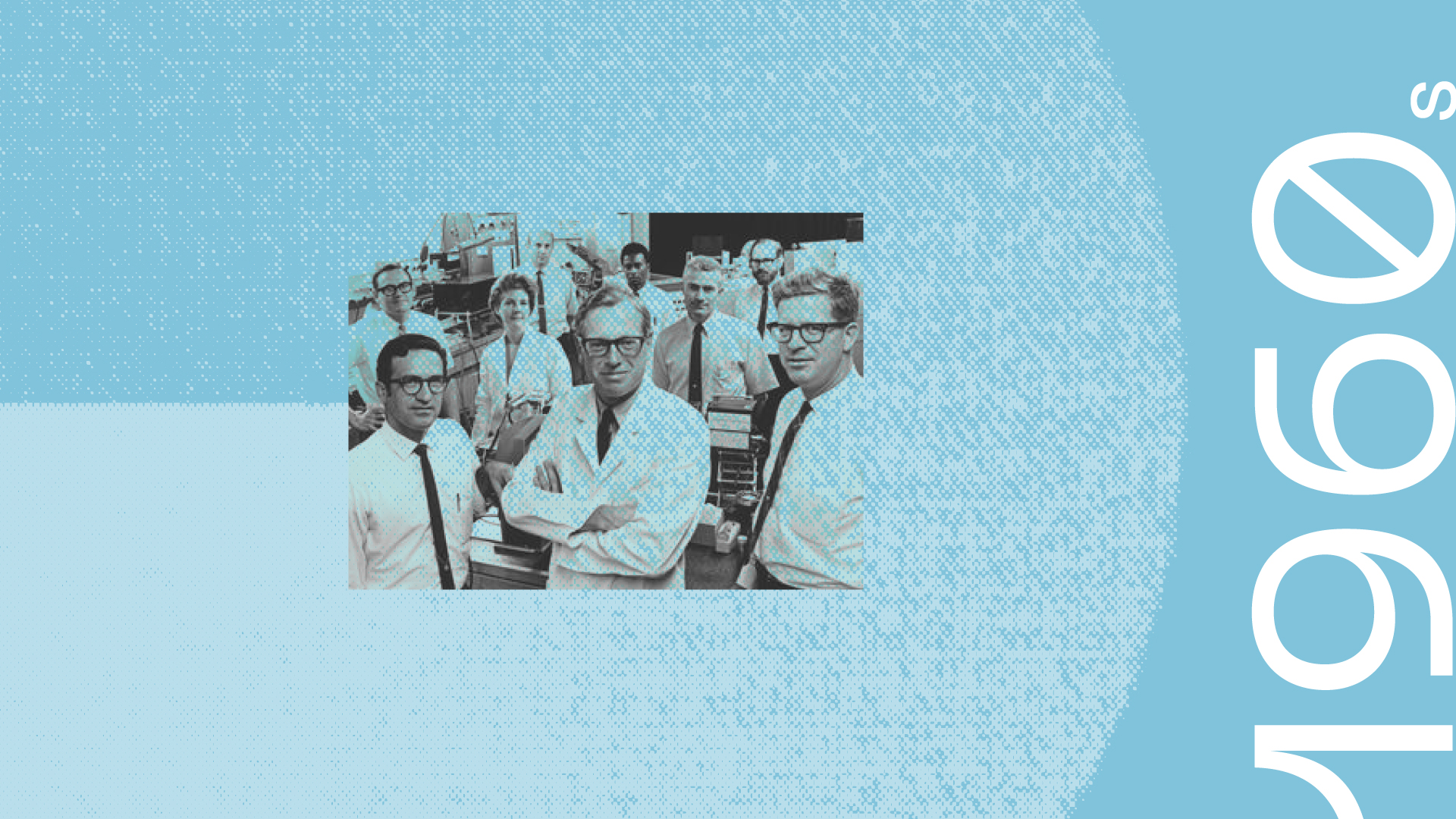
SRI built what was probably the first clinically useful instrument for laser photocoagulation, in which a laser is applied in small bursts to the eye in surgeries such as retinal reattachment, cauterization of bleeding, or removal of abnormal tissue.
White-light photocoagulation had been in use since the early 1950s, but because it required a large exposure to achieve the desired effect, the patient’s eye often had to be anesthetized. Lesions were often mislocated or too large to treat. Using lasers offered a better approach, but the first ones were difficult to use and somewhat dangerous.
SRI’s laser photocoagulator was noninvasive and simple to use for trained ophthalmologists. By choosing a suitable wavelength and exposure time, they could readily cauterize diseased blood vessels in the retina or reattach certain forms of torn or detached retinas. The laser’s contribution has been enormous.
The technology became the basis for Coherent Radiation, founded in 1966. Today known as Coherent, it is a billion-dollar corporation engaged in a wide range of laser applications.



